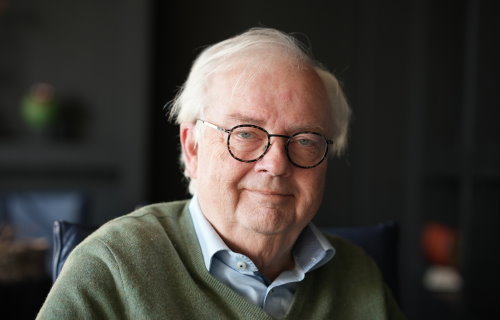
Remembering Wim Hendriksen (1951-2024)
Dear Wim,
Around 2000, an ASML spokesman put you forward as someone who could tell us more about technical software development. Bits&Chips was in its infancy and our customers wanted more ‘bits’ in the magazine. As head of software development, you were the perfect person indeed.

Our conversations also got personal. The last couple of years at ASML had been very stressful for you and you’d just decided to call it quits. “Trucks are made to drive 80 kilometers an hour,” you confided to me. “You can drive 120, but then they won’t last as long. I drove 120 all the time at ASML.”
In the years that followed, you took Bits&Chips by the hand, giving us a glimpse into your world. Into what software development means in an environment dominated by hardware and physics. You taught us that computer scientists in this world have to be of service. That they shouldn’t complain when at the end of the development process they have to tie everything together and clean up the shit caused by others. “That’s just our job,” you told me.
As a software developer, you may be right, you said, but decisions very often go the other way. “Don’t fight a battle you can’t win,” was your advice, crediting Guy Broadfoot, your boss at Philips Medical, where you learned the ropes yourself.
Your anecdotes about everyday software practice were always hilarious. Like the one about the newly graduated PhD student who neatly delivered the requested design to you but was then dumbfounded when you told him to program it himself. I’d heard from other managers that OEMs in the region couldn’t stand secondment companies, but you made it palpable. In doing so, you also had the guts to let me quote you on that.
You had genuine concerns about the state of education, on all levels. It’s telling that, after your career at ASML, you didn’t go to a university but joined Fontys University of Applied Sciences – until you were no longer allowed to. Transferring your experience was important to you, and you were immensely disturbed by the pomposity and power games of your academic neighbors on the other side of the Kennedylaan.
Just last year, you stood up for TUE dropouts. According to you, with a little more attention and guidance, they could be saved for the tech industry. You couldn’t resist venting your annoyance. In that respect, your columns for Bits&Chips and Digitale Stad Eindhoven were a good outlet.
You gave our editors solicited and unsolicited advice. Like the time you were unhappy with our choice of words. “We only speak simplified English here and not bloated American,” you e-mailed. “And I refuse to reach for the dictionary.” You were right, of course. Your criticism was sometimes harsh – but always with a warning upfront: “Watch out, here it comes, don’t take it too personally and do with it what you will.”
Back in 1997, you had the vision that ASML machines needed a new software architecture and you gave a team the freedom to think revolutionary. “As long as we can roll it out in an evolutionary way.” The resulting architecture didn’t quite make it into the system as ASML was in a hurry and there was no time for frivolities from the software department. That was a hard pill to swallow, but in the end, you could live with that too.
Even though you said goodbye to ASML more than twenty years ago, you’ve undoubtedly left your mark. The company still employs a generation of software experts who grew up with your down-to-earth approach. People who know that helping someone is more important than your own ego.
I’m very fortunate to have met and gotten to know you. It’s very special to me how our interview turned into a friendship. I’m grateful to you for that. Wim, we had a great time and we really enjoyed it.





